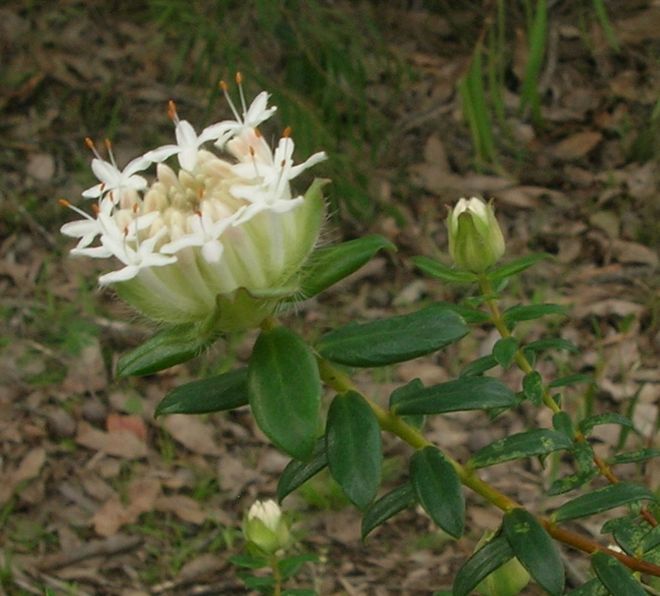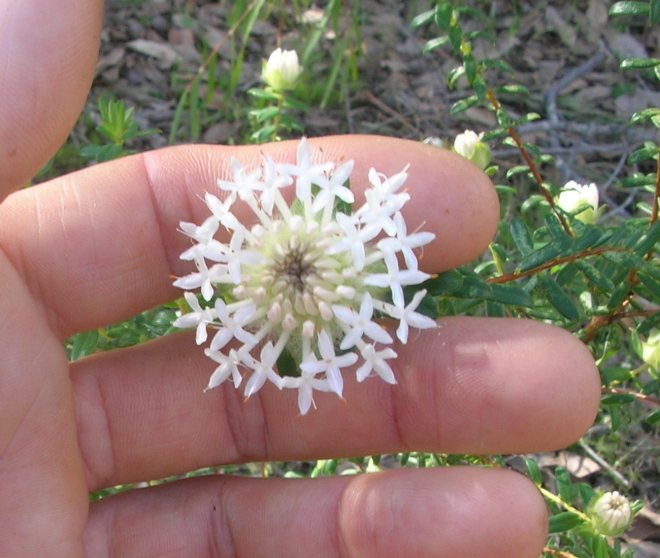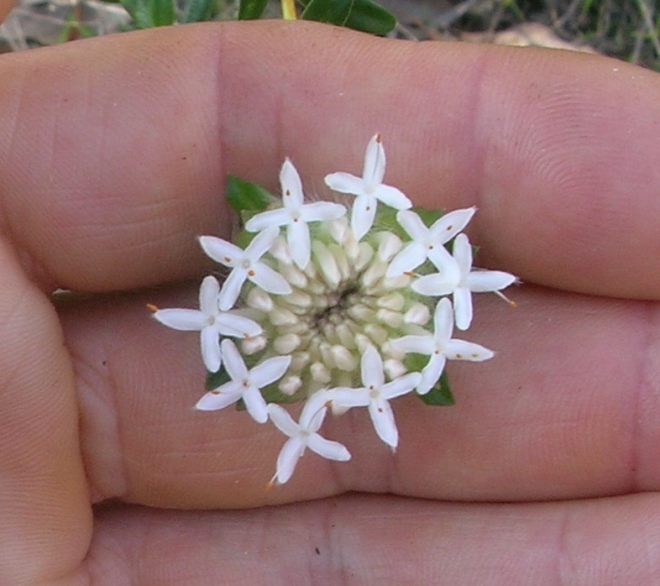A while ago I blogged about P. ferruginnea in our garden at home here.
Then I spotted this really nice plant with an outstanding white flower and included it’s photo in this “bush bash” post, even though I didn’t know it’s name at the time…shock horror. Here’s my original picture.

A kindly soul has now identified it for me (thanks Debbie) as a member of the Pimelea genus. So I went and took a couple more pictures of it (as you do):


Now, which species of pimelea is this? The leaves look a lot like the ferruginea, but according to Denise Greig, they only flower pink (a list of the books I’m using is here). I can’t make out enough of the leaves from her pictures of other species to try and match it to others.
So, hopping over to Nevill…Pimelea brachyphylla looks promising. White flowers, possibly the right leaf shape…the pictures a bit small. But then P. ciliata has white flowers too….and P. spectablis, although the shape of the flower looks different, and p. cracens, although white of flower, is totally the wrong shape and not endemic to Jarrah-Marri woodland. You see what this bloody obsession with names is like!
Onwards…P. floribunda: white flower, growth habit not quite the same, wrong regions (Banksia and Eucalypt woodland…oooh, that’s where I live the rest of time!)
P. lanata – right colour, right region, right growth habit, but petals look a bit different from the picture, which isn’t great.
And lastly, Google Images and mainly Florabase. “Images” is great, but maybe a little unreliable at the more obscure end of Australian Fauna…mainly because of amateurs like me taking guesses based on Google Images.
From Florabase though, Pimelea brachyphylla looks geographically wrong; occurs further east.
P. ciliata looks very similar though (Florabase here)…so in the interests of getting to bed sometime today, I’ll go with a tentative P. Cilata, or one of it’s sub-species…what!? There are sub-species too…awesome!
Anyway, nice flower isn’t it? A member of the Thymelaeaceae family…(Good Lord, how many syllables is that? It’s like the end of a line in a sea shanty or some rousing western ballad.)
The only other genus in the Thymelaeaceae (I’m using cut and paste for that) family is Thecanthes. A genus so obscure that even Wrigley and Fagg (the thumping door stop of a book on all things Australian and flowering) only mention one: Thecanthes punicea – not cultivated that often, but “Flowers are spectacular” during the Darwin wet-season. Well there’s one good reason to go to Darwin in the wet season.
Gosh, wasn’t that fun? A half hour well spent. 🙂 Let’s see if anyone else got this far…I noticed this really neat Polling thing in someone’s blog the other day, so I thought I’d have a go:
